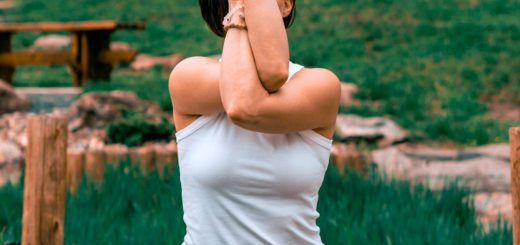Pranayama: Enhancing Vitality with Breathwork

Before diving in, please note: This post is for informational purposes only. If you’d like to know more about how we approach topics, feel free to check out our friendly Disclaimer Page.
Hey there, amazing readers! 🖐️ Just a quick note: yes, we know there are a lot of ads here. Trust us, we get it—it’s not the prettiest look, but they help us keep this blog alive and kicking. Those pesky little ads cover the costs of all the behind-the-scenes magic, from hosting and tech stuff to creating content we hope you’ll love.
We’re committed to delivering quality posts, and your support (even just sticking around despite the ads) means everything to us. So, bear with us, and thanks for helping us keep the good vibes rolling. Now, on to the fun stuff! 😉
TRANSLATE BUTTON AT THE END OF THE ARTICLE
A Quick Overview
Pranayama is an ancient practice that focuses on breath control, a fundamental aspect of yoga.
By regulating the breath, individuals can enhance their vitality, improve concentration, and promote overall well-being.
This article will delve into the basics of pranayama, the benefits it offers, techniques for beginners, advanced practices, the importance of proper posture, timing, precautions to take, combining pranayama with asanas, integrating meditation, and ways to incorporate pranayama into daily life.
Seeking guidance from a qualified instructor is crucial to ensure safe and effective practice.
The Basics of Pranayama
Pranayama consists of various breathing techniques that aim to harness the life force or prana within the body.
By controlling the breath, practitioners can influence their energy levels, calm the mind, and bring balance to the body.
This ancient practice is deeply rooted in yoga philosophy and is considered a powerful tool for self-transformation.
Through pranayama, individuals can tap into their inner vitality and connect with their true essence.
Understanding Breathwork
Breathwork is the foundation of pranayama practice.
It involves conscious manipulation of the breath to achieve specific outcomes, such as relaxation, increased energy, or mental clarity.
By becoming aware of the breath and its patterns, individuals can learn to control their physiological and psychological responses.
Breathwork is not only a physical practice but also a meditative one, as it requires focus and presence of mind.
Benefits of Pranayama
Pranayama offers a myriad of benefits for both the body and mind.
Some of the key advantages include:
Improved respiratory function
Reduced stress and anxiety
Enhanced concentration and focus
Increased energy levels
Balancing of the nervous system
Boosted immune system
Greater self-awareness and emotional regulation
These benefits make pranayama a valuable practice for anyone looking to improve their overall health and well-being.
Techniques for Beginners
For beginners, starting with simple pranayama techniques is recommended.
One of the most accessible practices is diaphragmatic breathing, where individuals focus on breathing deeply into the belly.
Another beginner-friendly technique is Nadi Shodhana, or alternate nostril breathing, which helps balance the energy channels in the body.
As beginners progress, they can explore more advanced practices under the guidance of a qualified instructor.
Advanced Pranayama Practices
Advanced pranayama practices involve more intricate breath control techniques, such as Kapalabhati (skull-shining breath) and Bhastrika (bellows breath).
These practices require a deeper understanding of breath retention and manipulation.
Advanced practitioners can also explore Kundalini breathing techniques to awaken the dormant energy at the base of the spine.
It is essential to approach advanced practices with caution and under the supervision of an experienced teacher.
Importance of Proper Posture
Maintaining proper posture is crucial during pranayama practice as it allows for optimal breath control and energy flow.
Sitting upright with a straight spine and relaxed shoulders helps create space for the breath to move freely.
The alignment of the body also supports the opening of the chest and diaphragm, facilitating deeper and more effective breathing.
Practitioners should find a comfortable seated position that allows them to remain alert and focused throughout their practice.
Timing and Frequency
The timing and frequency of pranayama practice can vary depending on individual needs and preferences.
Some practitioners prefer to incorporate pranayama into their daily yoga routine, while others may practice it as a standalone meditation.
Ideally, pranayama should be done on an empty stomach to maximize its benefits.
Starting with a few minutes of practice each day and gradually increasing the duration can help build stamina and proficiency over time.
Precautions to Take
While pranayama is generally safe for most individuals, there are some precautions to keep in mind.
Pregnant women, people with certain medical conditions, and those with respiratory issues should consult a healthcare provider before starting a pranayama practice.
Overdoing certain techniques, such as breath retention, can lead to dizziness or hyperventilation.
It is essential to listen to your body, practice mindfully, and seek guidance when needed.
Combining Pranayama with Asanas
Practicing pranayama alongside yoga asanas can enhance the overall benefits of both practices.
By coordinating breath with movement, individuals can deepen their practice and cultivate a sense of unity between body and mind.
Breath awareness during asana practice can help individuals stay present and focused, while pranayama techniques can support the release of tension and promote relaxation in challenging poses.
Integrating pranayama with asanas creates a holistic yoga experience.
Integrating Meditation
Pranayama is often used as a preparatory practice for meditation due to its calming and centering effects on the mind.
By incorporating pranayama into a meditation routine, individuals can create a sense of inner stillness and clarity.
Breath awareness serves as an anchor for the mind, preventing distractions and promoting mindfulness.
Meditating after a pranayama session can deepen the state of relaxation and lead to profound insights and self-discovery.
Incorporating Pranayama into Daily Life
Beyond the confines of a yoga mat, pranayama can be integrated into daily life to promote mindfulness and stress reduction.
Simple techniques like deep belly breathing or mindful breathing can be practiced anytime, anywhere, to bring a sense of calm and clarity to hectic days.
Taking a few moments to connect with the breath can help individuals center themselves, release tension, and approach challenges with a clear mind.
By incorporating pranayama into daily routines, individuals can cultivate a greater sense of balance and well-being.
Seeking Guidance from a Qualified Instructor
To ensure safe and effective practice, it is advisable to seek guidance from a qualified pranayama instructor.
A knowledgeable teacher can provide personalized instruction, offer feedback on technique, and tailor practices to individual needs.
Working with an experienced instructor can help navigate the complexities of pranayama and ensure a tailored approach towards achieving specific goals.
By learning from a qualified teacher, practitioners can unlock the secrets of pranayama and deepen their understanding of this ancient practice.
Conclusion
Pranayama is a powerful practice that offers a multitude of benefits for the body, mind, and spirit.
By exploring the basics of breathwork, understanding its profound effects, and incorporating it into daily life, individuals can enhance their vitality, reduce stress, and cultivate a deeper connection to themselves.
Whether practiced as a standalone meditation or in conjunction with yoga asanas, pranayama has the potential to transform one’s well-being and bring about lasting positive changes.
Seeking guidance from a qualified instructor is essential to ensure safe and effective practice, allowing individuals to harness the full potential of pranayama in their journey towards holistic health and self-discovery.

The Enlightenment Journey is a remarkable collection of writings authored by a distinguished group of experts in the fields of spirituality, new age, and esoteric knowledge.
This anthology features a diverse assembly of well-experienced authors who bring their profound insights and credible perspectives to the forefront.
Each contributor possesses a wealth of knowledge and wisdom, making them authorities in their respective domains.
Together, they offer readers a transformative journey into the realms of spiritual growth, self-discovery, and esoteric enlightenment.
The Enlightenment Journey is a testament to the collective expertise of these luminaries, providing readers with a rich tapestry of ideas and information to illuminate their spiritual path.
Our Diverse Expertise 🌟
While our primary focus is on spirituality and esotericism, we are equally passionate about exploring a wide range of other topics and niches 🌍📚. Our experienced team is dedicated to delivering high-quality, informative content across various subjects ✨.
To ensure we provide the most accurate and valuable insights, we collaborate with trusted experts in their respective domains 🧑🏫👩🏫. This allows us to offer well-rounded perspectives and knowledge to our readers.
Our blog originally focused on spirituality and metaphysics, but we’ve since expanded to cover a wide range of niches. Don’t worry—we continue to publish a lot of articles on spirituality! Frequently visit our blog to explore our diverse content and stay tuned for more insightful reads.






